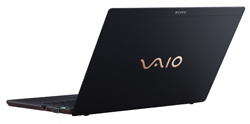Can a laptop ever be too thin?

Ralph Lauren is on the receiving end of a blogosphere backlash today over an apparent Photoshop job gone awry. It turns out there is such a thing as too thin. I mention this because yesterday both Dell and Sony introduced new laptops that give new meaning to ultra-thin. The trend toward mobile computing is undeniable--there's a reason some 25 million people will choose netbooks this year. But we're fast approaching the point where some laptops are thin purely for thin's sake, without adding any additional user value.
The ultra-thin laptop craze began in early 2008 when Apple first pulled a MacBook Air out of an interoffice envelope. The product sparked many "MacBook Air killers" such as the ThinkPad X300, Voodoo Envy 133, and original Dell Adamo. More recently, Intel lowered prices on its ultra-low voltage chips spawning a new class of ultra-thin laptops such as the Acer Timeline series and MSI X-Slim series.
These, it turns out, were just the start. At a press event yesterday to introduce new laptop lid designs, Dell officials also gave a brief glimpse of Adamo XPS, the next version of its luxury laptop for consumers. At this point, the only thing we know for certain about the Adamo XPS is that it will be very thin, more specifically 0.4 inches. By comparison, the MacBook Air measures 0.76 inches at its thickest point (it tapers toward the front). There's plenty of coverage of the Adamo XPS--here's Crave's post on yesterday's Dell event with some photos.

With their ultra-thin profiles, the Adamo XPS and Sony X series look great. So what's the catch? I haven't tested either yet, or seen full reviews, so I'll wait to issue a verdict on these particular models. But generally speaking, when computer companies set out to design the thinnest possible laptop, it still entails some compromises. Many of these systems have under-powered processors (sometimes with a single core), fewer ports and connectors, and shorter battery life. Apple took a lot of flak, for example, for eliminating the Ethernet jack on the MacBook Air. Internal optical drives are long gone, though many users find that to be a fair trade-off.
Portability is, of course, important and I'm glad the days of lugging 6- to 7-pound laptops are long gone. But it reaches a point of diminishing returns. Laptop bags aren't getting much smaller, and my Lenovo ThinkPad X series fits just fine. It could be that some of these new ultra-thin models will manage an engineering feat, and squeeze in nearly everything you'd want in a laptop. But if I have to choose, I can live with a slightly thicker ultraportable that has better performance, longer battery life and more features.